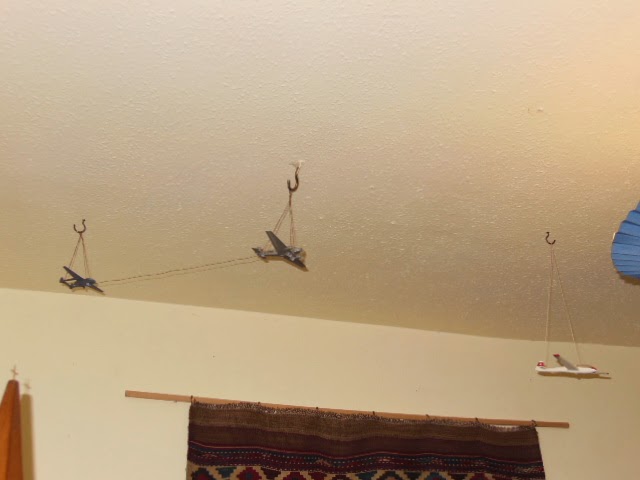 |
| Three He 111s |
I know these aren't gliders; but they were incredibly important for Fatty Messerschmitt and his fellow Gigants! These are Heinkel 111s, one of the most important German bombers used during WW II.
The Messerschmitt Gigant, you will remember, was a huge transport glider, the size of a jumbo jet. The Encyclopaedia Britannica described it thus:
- Crew: 5
- Capacity: 130 troops or 10–12 tonnes of equipment
- Length: 28.2 m (92 ft 4 in)
- Wingspan: 55.2 m (181 ft 0 in)
- Height: 10.15 m (33 ft 3.5 in)
- Wing area: 300 m² (3,228 sq ft)
- Empty weight: 27,330 kg (60,260 lb)
- Loaded weight: 29,500 kg (65,000 lb)
- Max. takeoff weight: 43,000 kg (94,815 lb)
- Powerplant: 6 × Gnome-Rhône 14N-48/49, 1180 PS for take-off (868 kW) each
[Actually these are the specifications for the motorised version of the gigant - I am trying to keep things un-technical. Most of the measurements are the same. Quite a few of the early glider gigants were up-graded to having six engines, but they still needed to be pulled up, albeit by only one large airplane in stead of three.]
How to get the likes of Fatty into the air was a real headache!
How to get the likes of Fatty into the air was a real headache!
One solution was the Troika-Schlepp, the triple tow. Three He 111s (or, more usually, Me 110 or Ju 90s) would tow the glider up in a synchronised operation that required enormous skills from the pilots of both the bombers that pulled and the Gigant that was pulled.
This operation has long fascinated me, and you can imagine my joy when Heini Heinkel's two brothers showed up around Christmas time! Old habits die hard, and so they did not object to take up their old positions in the Troika-Schlepp alignment in front of Fatty again.
This is what the set-up looks like:
 |
| Fatty Messerschmitt Gigant with three He 111s attached to him by ropes |
And in the air!
Of course one can see the same thing in any number of old movie reels and photos, but seeing it right under one's ceiling just before going to sleep is much more satisfying. It really brings home quite how huge the Gigants were, and how difficult it must have been to tow them using the Troika-Schlepp.
By the way, the three towing ropes are not all of the same length! The pilots and designers of the Troika-Schlepp in Regensburg-Obertraubling experimented with many different length ropes until they decided on the perfect combination - I copied their version of 140 m for right, 155 m for middle, 130 m for left.
The Troika-Schlepp is all the more impressive when you consider that usually the planes that pull up a glider are no smaller than, and usually larger than, the glider they pull up.
For example, the Gotha 242 was another German transport glider from WWII, but much smaller than the Gigant. It was pulled up by - inter alia - a Junker 52 (Tante Ju / Iron Annie), like so:
 |
| A Gotha 242 behind a Junker 52 |
 |
| Go 242 being pulled by a Ju 52 |
You see how much larger Tante Ju is than the Gotha glider she is pulling.
Just to round off my collection of Lastensegler (transport gliders), here photos of two from the other side, both much smaller than the gigant:
 |
| Horsa - used by Great Britain during WW II |
 |
| Waco - manufactured by the USAmericans for WW II |
Incidentally, another Scheibe Zugvogel has also made his way into my Nostalgia Studio. Now there are three of them, all living in my church tower.
If you are interested in reading more about the Gigant I can recommend the book by Peter Schmoll, Messerschmitt-Giganten. It's in German, not sure whether it ever got translated.




